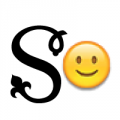Display typeface Silk road
Vladimir Khablov
Posts: 6

Hello Type Drawers Community! What do you think of my very first typeface? It has modular elements, but I plan to modify it into more natural and plastic forms in the future. I had a hard time deciding whether the strokes and 'swashes' should be consistent with the modular nature of the font or have an organic curvature. The width of some letters is also a quest for me. Any advice would be appreciated!
https://drive.google.com/file/d/1jOBdspaYg7ILPwq6YBac1HXE7xG64mjR/view?usp=sharing
1
Comments
-
You have a good variety of terminals, but they could be deployed in a way that emphasizes the letterforms more effectively. For instance, the bottom of the f has a smaller ball terminal that doesn't suggest direction as much as the swash terminals on the r and t. You could use that smaller ball terminal on the r to give it less of a c shape. The left side of the n looks bare; maybe those small terminals could be used there too. Some letters have interesting deep dives, like the n and the k, but the low right side of the d looks timid in comparison. I think you would benefit from a better solution for the lower right of the d, the top left of the r and any other letters that require that kind of connection—a solution that's at least as intriguing as the top left of the n.
3 -
I read "v1.0" as "rio"1
-
Very nice project! You captured the multi-script look very well, and it indeed has an exotic oriental/middle Asian look. Some very elegant solutions — I know that it is much harder than it might look. All in all very creative.
For the same reason, it is not easy to give advice, because it's your choice how far you would like to go away from classic type design toward the pure concept. But to try:
The lowercase l seems that lacks mass compared to other glyphs.
I am not sure about the bowl-to-straight connection seen in d and else. Seems like a residue from classic Latin, but in the context of the general concept, the continuous stroke might work better than a joint there. It works well for r though, as I said tough decisions...but the r is in classic Latin a kind of exception...
If this is my project — in addition to this cool v1.0 — I would try to make a more legible version, keeping the basic concept but moving away from modular, as you mentioned. Rather than expanding the language/script set for now.
For example, low d and n would be more legible if the deep dives are smaller. k leg could be narrower etc. The lower bowls of 3 and 5 in set 1 look broken because of applying the modular swash. In some places "bone effect" is noticeable etc.
The same features are sometimes applied decoratively but in other places as a main glyph structure. For example, figure 2 (set 1). The upper hook could be bigger since it's the basic glyph structure.
Applying some of these might make a typeface less exotic/multi-script, and move it closer to the Latin paradigm. But I think it's a good trade in the sense of usability. Also, as always, I would work in iterations on a basic set until I am satisfied with the corrections and then expand to the rest.0 -
Thanks for taking the time to give valuable advice, @Ray Larabie! If I understand you correctly, are you talking about the joints in 'bpqd' letters? The easiest solution I can see is to remove the stems. But removing stems in 'rnm' makes them bald
 I'll search for a workaround. As for the terminals, you suggest more consistency. In that case replacing the ball with a crescent in 'f' will do the trick, imo. Now I can see the c-shape of 'r' and removing the terminal might also be a good solution.
I'll search for a workaround. As for the terminals, you suggest more consistency. In that case replacing the ball with a crescent in 'f' will do the trick, imo. Now I can see the c-shape of 'r' and removing the terminal might also be a good solution.
In general, I want to keep some inconsistent illogical details, because when I bring all the characters to the system, coordinate their elements - everything becomes boring and does not please me. For example, I like the alternation of vertical and horizontal bold strokes in different letters - this and the curliness of such letters as 'a, b, d, e, p, q' give the typeface its zest.



0 -
I quite like this design; it has the kind of ambiguous exoticism to it that does not get tedious. It reminds me of similar ornamental display types by folks like Margo Chase, Jonathan Barnbrook, Miles Newlyn’s earlier stuff, and Jun Takechi. I don’t know enough Cyrillic-based languages or Georgian to judge its legibility in those scripts, but the Latin script samples are puzzles to be solved, just hard enough to make it fun.
Multiple character width choices are what JALT is supposed to be for, as soon as someone finally gets around to implementing it for Latin script in mainstream design software.
3 -
A couple of detail things, that are not structural issues…
your straight-to-curve transitions often look like you have glued a curve onto the end of a straight line. A more gradual onset to the curve would look better and feel more organic.
Also, for your thinnest strokes, I note that the horizontals look a bit heavier than the verticals. This is an unfortunate consequence of human perception: to _look_ the same thickness, you need to have the vertical a tad thicker than the horizontal; try a 10–15% difference and see how it looks. (You can get there by adjusting either or both.)
This video of mine covers these and some other issues, might be helpful: https://www.youtube.com/watch?v=LR-CG5eB3nQ (although the video from 2014 uses/promotes an old version of FontLab, the issues in question are independent of any particular tool) 3
https://www.youtube.com/watch?v=LR-CG5eB3nQ (although the video from 2014 uses/promotes an old version of FontLab, the issues in question are independent of any particular tool) 3 -
Just a general comment: I know it's not intended to be highly legible, but I find it a bit too much of a puzzle to read.2
-
Wow, thanks to all for the input! A couple of problems you noticed: unreadability above the level of interest in solving it @Jonh Nolan, @John Butler (kudos for the links - bullseye!), lack of optical compensations (yes, I aware of them and will save this issue until the next version of the font. Thanks for the exact % measurements, @Thomas Phinney! ) and the letter construction.0
-
@Igor Petrovic, it really is a concept - thanks for the positive feedback! Also thanks for pointing out the details. You're right - the crescent sometimes acts as more than just a swash, but also as a small, thick stroke. It's probably more of a search for the volumes in the letterforms right now. I'll decide how to differentiate them when moving away from modularity. Either a new module has to be introduced...
 Sometimes I wish there was more of this kind of nonsense, like in number 2. And I'd get rid of the boring versions of the "correct" characters. I've been so inspired that I've already gone over Cyrillic and Georgian. And there are new challenges and riddles (more horizontal bars, and therefore a solution with them joining the strokes). I see your point - arrive at an ideal in one script, then take on others. More is not better. Your comment about more practicality also got me thinking. And that's really my choice - how far I'm willing to go (seems like no further:) ) More readable would probably be a new typeface to pair with this one. After all, following the concept, goods from China were also not immediately accepted in Europe - it took time to accept their exoticism
Sometimes I wish there was more of this kind of nonsense, like in number 2. And I'd get rid of the boring versions of the "correct" characters. I've been so inspired that I've already gone over Cyrillic and Georgian. And there are new challenges and riddles (more horizontal bars, and therefore a solution with them joining the strokes). I see your point - arrive at an ideal in one script, then take on others. More is not better. Your comment about more practicality also got me thinking. And that's really my choice - how far I'm willing to go (seems like no further:) ) More readable would probably be a new typeface to pair with this one. After all, following the concept, goods from China were also not immediately accepted in Europe - it took time to accept their exoticism
2 -
It looks like a sort of Art Deco-influenced Tuladha Jejeg, to the extent that I keep trying to read it as Javanese and getting really confused.2
-
Besides my feedback, I should add that although it may be a bit too unusual a display face for me to find (many?) uses for it, I do quite enjoy this typeface!1
-
An amazing reference to Javanese script, @Simon Cozens!0
-
Thank you, it's a pleasure, @Thomas Phinney!
0
Categories
- All Categories
- 46 Introductions
- 3.9K Typeface Design
- 487 Type Design Critiques
- 563 Type Design Software
- 1.1K Type Design Technique & Theory
- 655 Type Business
- 859 Font Technology
- 29 Punchcutting
- 520 Typography
- 119 Type Education
- 324 Type History
- 77 Type Resources
- 112 Lettering and Calligraphy
- 33 Lettering Critiques
- 79 Lettering Technique & Theory
- 558 Announcements
- 94 Events
- 114 Job Postings
- 170 Type Releases
- 179 Miscellaneous News
- 276 About TypeDrawers
- 54 TypeDrawers Announcements
- 120 Suggestions and Bug Reports




